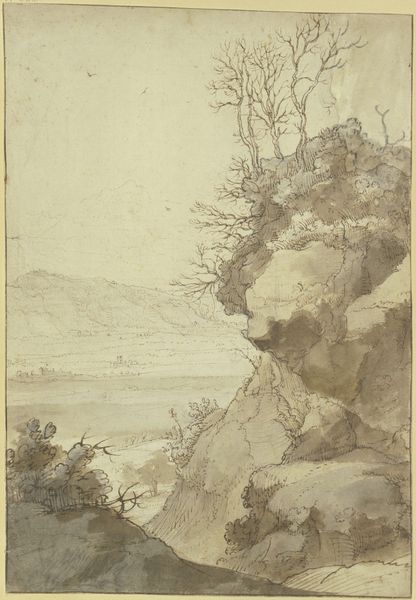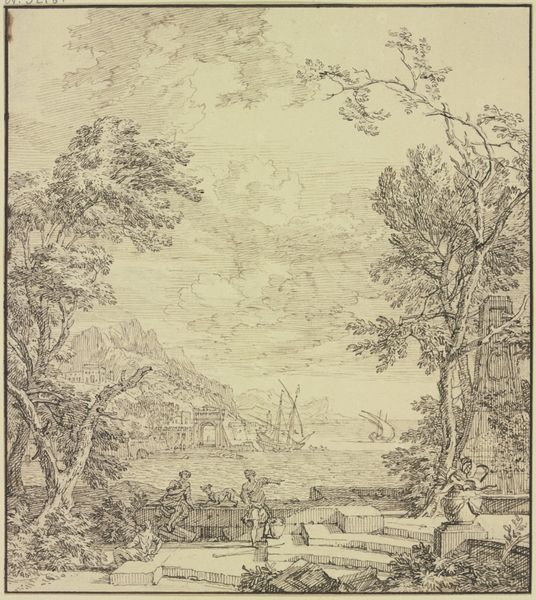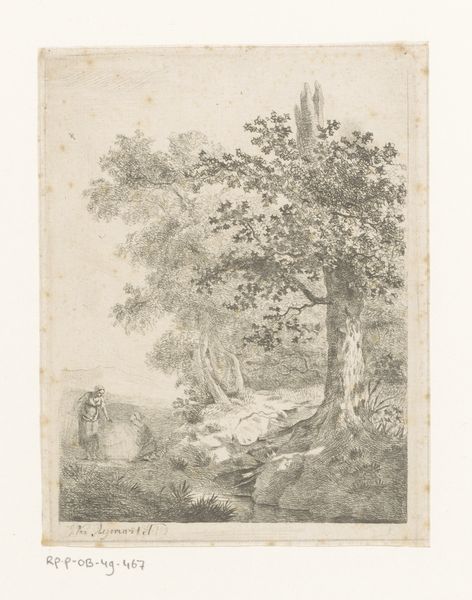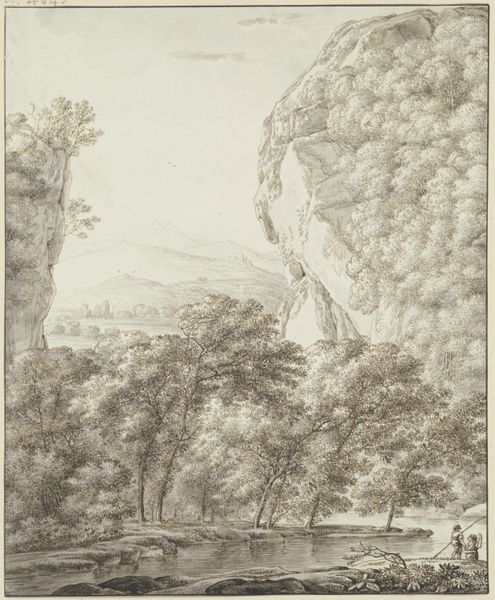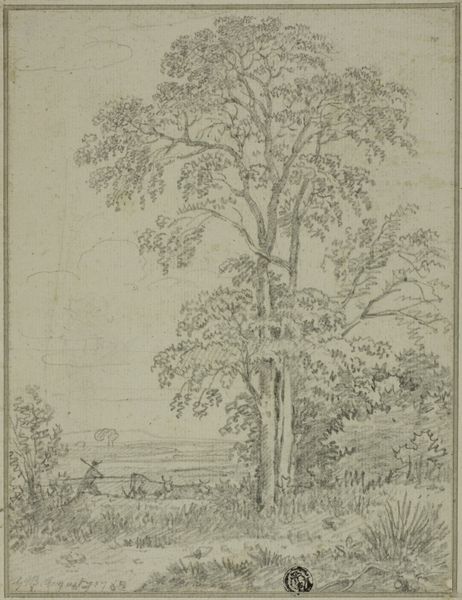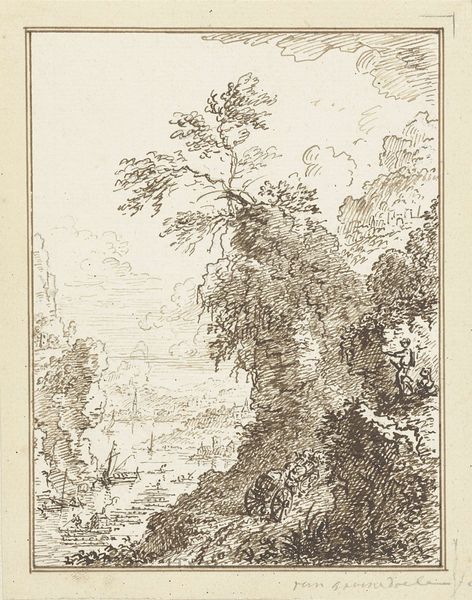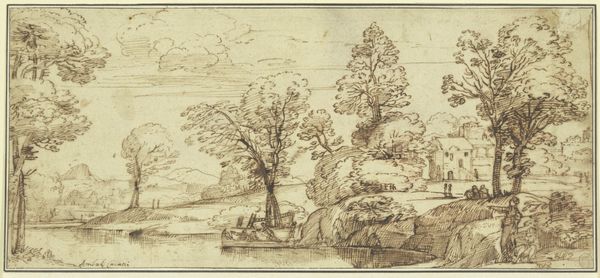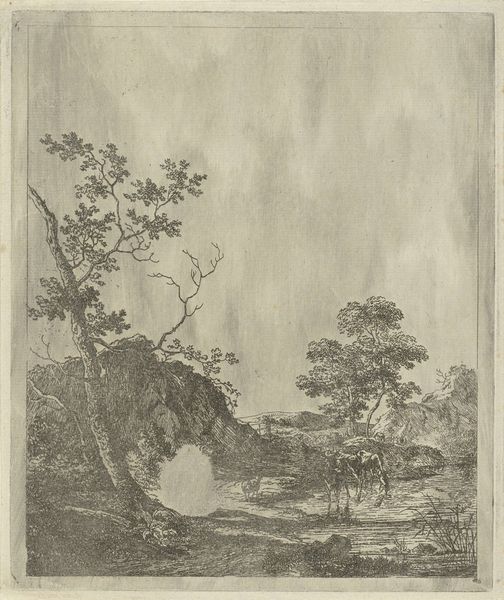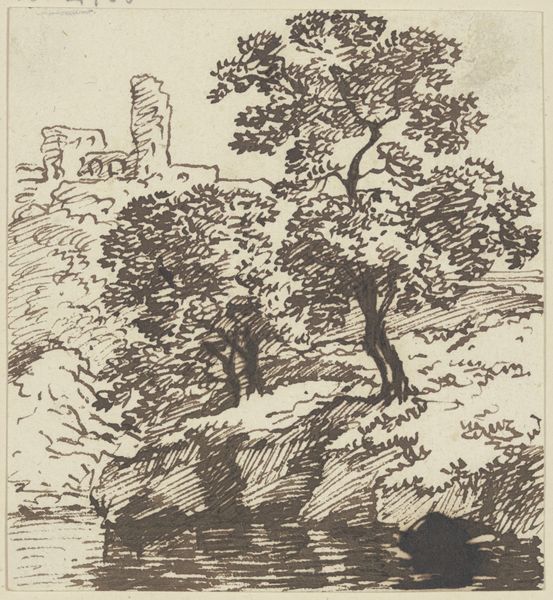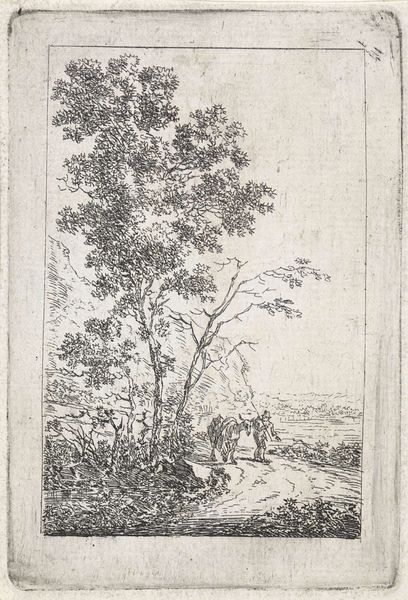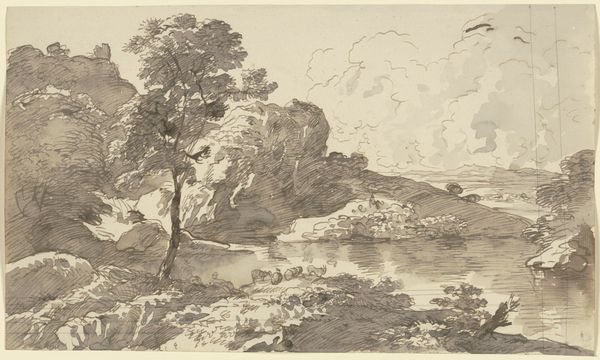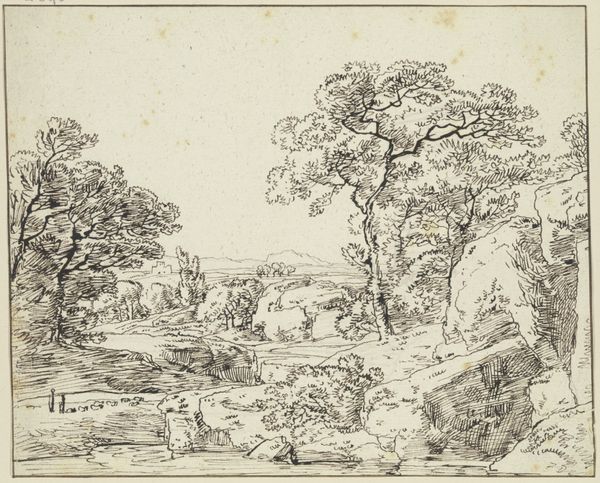
Aussicht auf einen Fluss an welchem Gebäude und ein Brunnen stehen, ein Reiter tränkt sein Pferd
0:00
0:00
drawing, etching, ink
#
drawing
#
baroque
#
etching
#
landscape
#
etching
#
ink
Copyright: Public Domain
Editor: This artwork by Isaac de Moucheron, titled "Aussicht auf einen Fluss an welchem Gebäude und ein Brunnen stehen, ein Reiter tränkt sein Pferd," which translates to "View of a river with buildings and a fountain, a rider waters his horse" is rendered in ink, etching and drawing. It presents a rather tranquil scene; I am drawn to its layered landscape. What do you see in this piece? Curator: I see a careful construction of landscape, very characteristic of the Baroque period. Artists like Moucheron were less interested in portraying a specific, real place, and more invested in creating idealized visions, reflecting ideas of order and control over nature itself. The etching, as a medium, allowed for mass production and distribution, expanding access to these landscape visions. Editor: So it's less about representing reality and more about constructing an ideal, which would be appealing. Curator: Precisely. Think about who was commissioning and consuming these landscapes: often, it was the emerging merchant class, eager to emulate aristocratic lifestyles and demonstrate their own command of their surroundings, perhaps through land ownership. The imagery itself becomes a tool for social positioning. Consider the horse and rider, this act of caring for the animal seems more romantic than practical, further pushing this aesthetic sensibility. Editor: That makes me think about how even seemingly simple landscape images are deeply embedded in the social and political contexts of their time. How the distribution of this particular art via print making may shape social tastes. Curator: Exactly! We can understand so much about a period by studying its landscapes and how those pictures circulated. Do you find your own sense of place shifting now that you’re more deeply studying Art History? Editor: I think so! I am viewing place and imagery in different ways now; that art creates taste and tells history, and even affects my own way of understanding the world. Thanks. Curator: It’s been my pleasure.
Comments
No comments
Be the first to comment and join the conversation on the ultimate creative platform.

